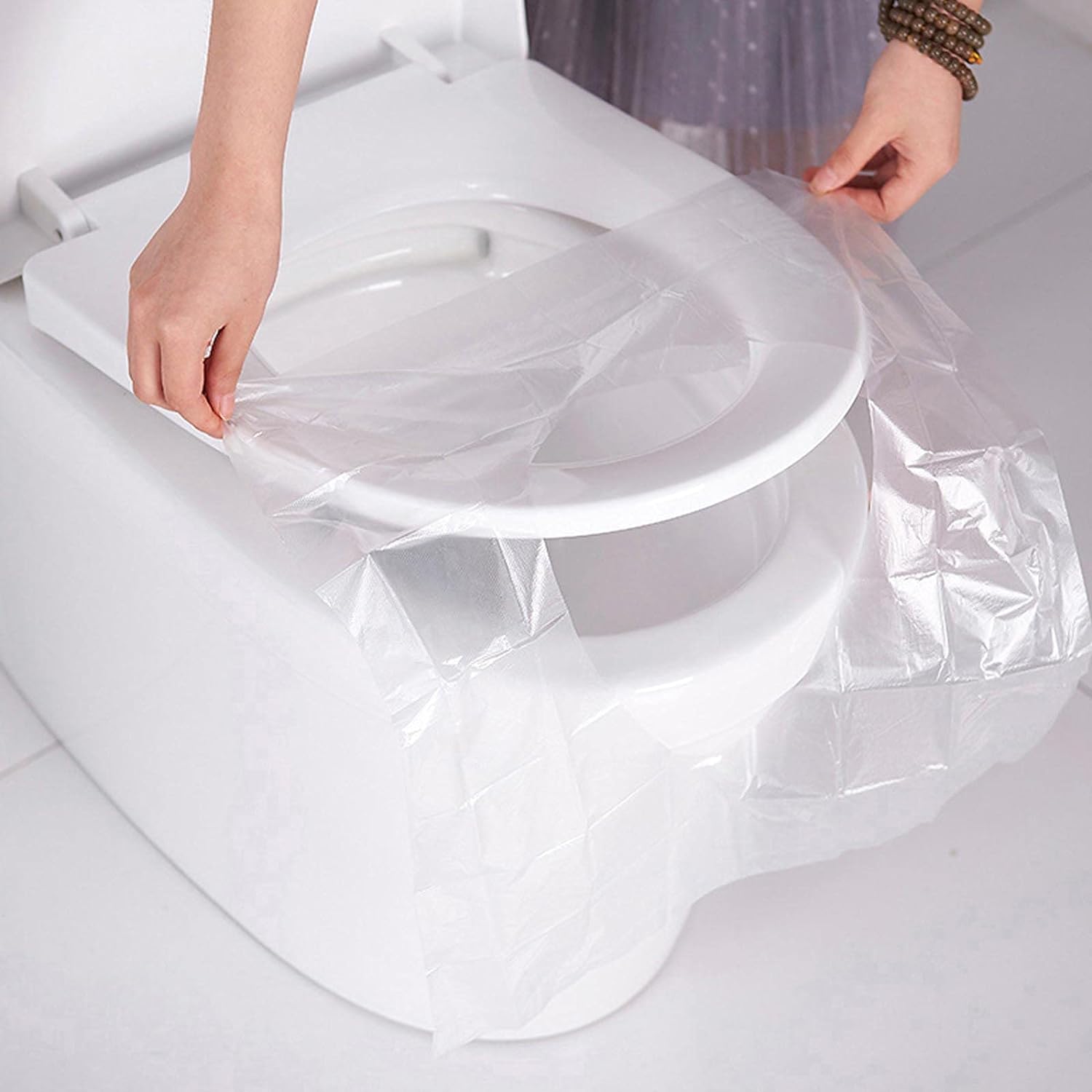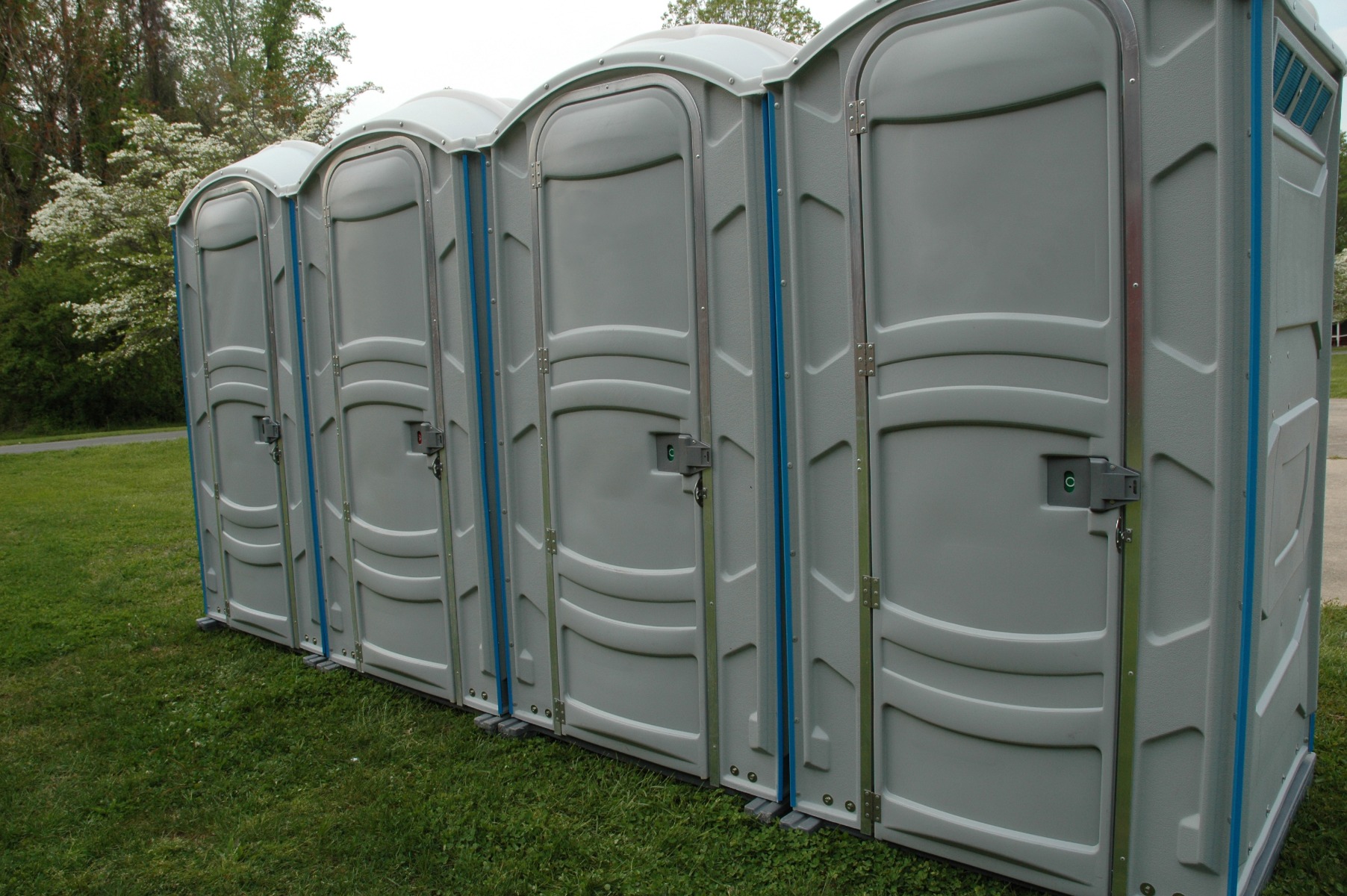In recent years, the use of portable restrooms has become increasingly popular at outdoor events and construction sites. These temporary facilities provide convenience and hygiene for individuals in need of bathroom facilities in remote locations. However, ensuring proper use of hand sanitizer within these portable restrooms is essential to maintain cleanliness and prevent the spread of germs. For instance, consider a hypothetical scenario where a large outdoor music festival provides multiple portable restrooms throughout the venue. Without clear guidelines on hand sanitizer usage, attendees may unknowingly neglect this important step in maintaining personal hygiene, leading to potential health risks.
To address this issue, it is imperative to establish comprehensive application guidelines for portable restroom rentals that emphasize the importance of using hand sanitizer effectively. This article aims to highlight key considerations in promoting proper hand sanitation practices within portable restroom settings. By adhering to these guidelines, event organizers and site managers can enhance overall cleanliness and minimize the risk of germ transmission among users. Additionally, understanding the significance of hand sanitizer utilization within portable restrooms can contribute towards creating a healthier environment for all individuals who rely on these facilities while attending events or working on remote job sites.
Step 1: Understand the importance of hand hygiene
Step 1: Understand the Importance of Hand Hygiene
Hand hygiene plays a crucial role in preventing the spread of infections and maintaining public health. To illustrate this point, consider a hypothetical scenario where an outdoor event is held without proper hand hygiene practices in place. Attendees, not being aware of the potential risks, fail to sanitize their hands after using portable restrooms. As a result, harmful pathogens are easily transmitted from person to person, leading to a significant increase in illness cases among attendees.
To emphasize the significance of hand hygiene further, here are some key points to keep in mind:
- Effective hand hygiene can reduce the transmission of infectious diseases by up to 80%.
- Regular handwashing with soap and water for at least 20 seconds is recommended as one of the most effective methods for germ removal.
- When soap and water are unavailable, alcohol-based hand sanitizers containing at least 60% alcohol can be used as an alternative.
- Proper hand hygiene should be practiced before eating or preparing food, after using the restroom, sneezing/coughing into hands, touching surfaces in public areas, and caring for someone who is sick.
By adhering to these guidelines, individuals can significantly minimize their risk of contracting and spreading illnesses.
Moving forward into our next section about choosing the right type of hand sanitizer…
Step 2: Choose the right type of hand sanitizer
In a recent study conducted by the Health Department, it was found that improper use of hand sanitizer in portable restrooms has led to an increase in bacteria-related illnesses among users. This highlights the crucial role that proper hand hygiene plays in maintaining public health and preventing the spread of diseases. To ensure the effectiveness of hand sanitizers in portable restroom rentals, it is essential to choose the right type of sanitizer and understand its correct usage.
To emphasize the significance of this issue, let’s consider a hypothetical scenario. Imagine a music festival where thousands of attendees utilize portable restrooms throughout the day. The organizers have provided hand sanitizers inside each unit for convenience. However, due to lack of awareness or negligence, many individuals fail to properly sanitize their hands after using these facilities. Consequently, there is a rapid transmission of harmful bacteria among festival-goers, leading to widespread illness within the community.
To prevent such scenarios from occurring and promote better sanitation practices, we recommend following these guidelines:
- Educate users on the importance of regular hand sanitization through clear signage inside every portable restroom.
- Choose alcohol-based sanitizers with at least 60% ethanol or 70% isopropanol concentration for optimum efficacy.
- Encourage thorough coverage by rubbing sanitizer over all surfaces of both hands until dry.
- Remind users not to rinse off or wipe their hands immediately after application as this may reduce its effectiveness.
To further illustrate how critical proper hand hygiene is in portable restrooms, consider the table below displaying potential risks associated with inadequate sanitation practices:
| Risk | Consequence |
|---|---|
| Spread of bacterial infections | Increased incidence |
| Cross-contamination | Enhanced risk for vulnerable populations |
| Outbreaks | Public health concerns |
| Negative impact on event reputation | Decreased attendance and revenue |
In conclusion, the significance of understanding hand hygiene practices cannot be overstated. By selecting the appropriate type of sanitizer and promoting its proper use within portable restrooms, we can significantly reduce the risk of bacterial transmission and safeguard public health. In the subsequent section, we will discuss how to properly store and dispense hand sanitizers in these facilities.
Transitioning smoothly into the next section about “Properly Store and Dispense Hand Sanitizer,” it is essential to establish a system that ensures easy access for users while maintaining cleanliness and effectiveness.
Step 3: Properly store and dispense hand sanitizer
Imagine this scenario: You’re hosting an outdoor event, and you’ve taken all the necessary precautions to ensure a safe and enjoyable experience for your guests. One crucial aspect is providing portable restrooms equipped with hand sanitizers. However, it’s essential to choose the right type of hand sanitizer to maximize its effectiveness in preventing the spread of germs.
To help you make an informed decision, here are some factors to consider when selecting hand sanitizers:
- Alcohol content: Look for a hand sanitizer that contains at least 60% alcohol. This concentration has been proven effective in killing various types of bacteria and viruses.
- Ingredients: Check the ingredients list for any potential allergens or irritants. Opting for fragrance-free and hypoallergenic options can minimize the risk of adverse reactions.
- Dispensing mechanism: Consider whether you prefer a touchless dispenser or one with manual operation. Touchless dispensers reduce cross-contamination risks by eliminating contact with potentially contaminated surfaces.
- Accessibility: Ensure that the chosen hand sanitizer is easily accessible within each portable restroom unit. Placing them near entry points or on prominent display encourages regular usage among users.
Now let’s delve into Step 3, where we’ll explore proper storage and dispensing techniques for hand sanitizers.
| Benefits | Safety | Convenience |
|---|---|---|
| Kills germs | Reduces infection | Easy to use |
| Portable | Prevents illness | Quick application |
| Promotes hygiene | Protects from disease | No water required |
Proper storage and dispensing of hand sanitizer are vital to maintain its efficacy and accessibility. By following these guidelines, you can ensure that your portable restrooms provide optimal protection against harmful germs:
- Store securely: Keep hand sanitizers in a cool, dry place away from direct sunlight. Extreme temperatures can reduce their effectiveness.
- Regularly check expiration dates: Pay attention to the expiry dates of your hand sanitizer supplies and replace any expired products promptly.
- Use appropriate dispensers: Install durable and easy-to-use dispensers that are compatible with the type of hand sanitizer being used. Ensure they are securely attached to prevent theft or tampering.
- Refill as needed: Monitor the level of hand sanitizer regularly and refill it when necessary to avoid running out during peak usage times.
By selecting suitable hand sanitizers and implementing proper storage and dispensing techniques, you can enhance hygiene practices at your event or facility effectively. Next, we will discuss Step 4, which focuses on educating users about the correct usage of hand sanitizer.
Step 4: Educate users on hand sanitizer usage
Imagine a scenario where an outdoor event is taking place with hundreds of attendees. The portable restrooms are equipped with hand sanitizer dispensers, but due to negligence in monitoring and refilling the supply, they run out halfway through the event. This unfortunate situation not only compromises the hygiene standards but also leaves users frustrated and dissatisfied. To avoid such occurrences, it is crucial to implement proper protocols for regularly monitoring and refilling hand sanitizer.
To ensure an adequate supply of hand sanitizer at all times, consider implementing the following measures:
- Schedule regular checks: Designate specific time intervals throughout the day when staff members will inspect each portable restroom unit to assess the hand sanitizer levels.
- Keep backup stock readily available: Maintain a separate storage area near the event site specifically dedicated to storing additional bottles or containers of hand sanitizer. Regularly replenish this stock as needed during inspections.
- Establish communication channels: Implement effective communication systems between on-site staff responsible for managing portable restroom facilities. Ensure that any shortages or issues related to hand sanitizer supply are promptly reported so that appropriate actions can be taken without delay.
- Consider user feedback: Encourage users to provide feedback about their experience with the availability of hand sanitizer. Set up a suggestion box or create an online platform where attendees can share their thoughts regarding improvements in maintaining consistent access to hand sanitizing solutions.
By adhering to these guidelines, you can minimize instances of inadequate hand sanitizer supply and enhance overall user satisfaction.
Transition into subsequent section (Step 5: Regularly monitor and refill hand sanitizer):
A fundamental aspect of ensuring continuous access to hand sanitation lies in closely monitoring and timely refilling supplies. Let us explore how this step plays a pivotal role in maintaining optimal hygiene within portable restrooms.
Step 5: Regularly monitor and refill hand sanitizer
Step 4: Educate Users on Hand Sanitizer Usage
To ensure the proper use of hand sanitizer in portable restrooms, it is crucial to educate users about its importance and correct application. Let us consider a hypothetical scenario: John visits a public event where portable restrooms are provided. He enters one of these facilities but fails to properly utilize the hand sanitizer available inside. This example highlights the significance of educating individuals on how to effectively use hand sanitizers.
There are several key points that should be emphasized when instructing users on hand sanitizer usage:
- Dispensing an adequate amount: Encourage individuals to apply enough hand sanitizer to cover all surfaces of their hands thoroughly.
- Rubbing for at least 20 seconds: Instruct users to rub their hands together briskly, ensuring that the sanitizer covers all areas until it has evaporated completely.
- Paying attention to commonly missed areas: Remind individuals to focus on often overlooked parts such as fingertips, thumbs, between fingers, and around nails.
- Avoiding wiping or rinsing off excess sanitizer: Emphasize that after applying hand sanitizer, it is important not to wipe or rinse hands immediately afterward since this may reduce its effectiveness.
By implementing these educational measures, we can empower restroom users with knowledge regarding proper hand sanitizer usage and reinforce good hygiene practices.
| Common Mistakes When Using Hand Sanitizer |
|---|
| – Insufficient amount applied |
| – Not rubbing hands adequately |
| – Neglecting commonly missed areas |
| – Wiping or rinsing off excess sanitizer |
In addition to verbal instructions, visual aids like informative posters near the hand sanitizing stations can also help communicate these guidelines effectively. By combining clear explanations with visual cues, we can enhance user understanding and promote responsible usage of hand sanitizers in portable restrooms.
Transition into Step 5:
To maintain a high level of cleanliness within portable restrooms, it is essential to regularly monitor and refill the hand sanitizer dispensers. By implementing effective monitoring systems, event organizers can ensure that users always have access to an ample supply of sanitizing solution for their convenience and safety.
Step 6: Dispose of empty hand sanitizer containers responsibly
Having emphasized the importance of regularly monitoring and refilling hand sanitizer in portable restrooms, we now turn our attention to another crucial aspect of maintaining proper hygiene standards. Ensuring that empty hand sanitizer containers are disposed of responsibly is essential for creating a safe and clean environment for users.
Paragraph 1:
To illustrate the significance of responsible disposal, let us consider a hypothetical scenario where empty hand sanitizer containers were not properly discarded in a rented portable restroom. In this situation, if multiple individuals used the same restroom facility without realizing that the container was empty, they would be unable to sanitize their hands effectively. This oversight could potentially lead to an increased risk of spreading germs and infections among users, undermining the purpose of having hand sanitizers available in the first place.
In order to prevent such situations and promote good sanitation practices within your rental business or event venue, here are some key guidelines to follow when disposing of empty hand sanitizer containers:
- Ensure all containers are completely emptied before discarding them.
- Place designated receptacles near each portable restroom unit specifically for collecting used hand sanitizer containers.
- Clearly label these receptacles with appropriate signage indicating their purpose.
- Regularly check and empty these collection bins throughout the duration of the rental period.
| Responsible Disposal Tips |
|---|
| ✓ Empty all containers before discarding |
| ✓ Provide designated receptacles near each unit |
| ✓ Clearly label collection bins with signage |
| ✓ Regularly check and empty collection bins |
Paragraph 2:
By adhering to these guidelines, you can actively contribute towards maintaining cleanliness and preventing potential health risks within your portable restroom facilities. Responsible disposal ensures that users have access to fully functional hand sanitizers at all times, promoting effective hygiene practices and reducing the chances of illness transmission amongst individuals. Moreover, it also demonstrates your commitment to providing a safe and hygienic environment for your customers or event attendees.
In summary, the proper disposal of empty hand sanitizer containers is a critical step in maintaining the overall sanitation standards of portable restrooms. By following these guidelines and incorporating responsible disposal practices into your regular maintenance routine, you can contribute to creating a clean and healthy environment for all users.
(Note: Please be aware that markdown formatting might not appear correctly due to platform limitations.)





